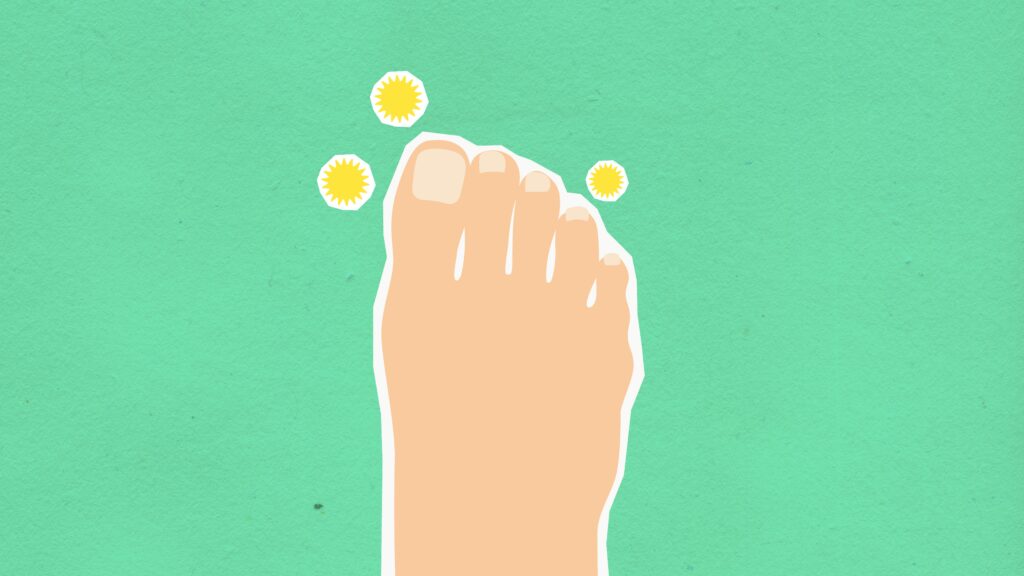Laser treatment of onychomycosis (fungal nail infection) is an effective way to clear your nails. This is a simple and painless procedure.
The fungal spores in the nails and surrounding skin are damaged by the laser beam. This weakens the fungus and allows your body to naturally eliminate the fungus.

Effectiveness
The fungal nail disease is a serious and persistent problem for many people with onychomycosis. It is very difficult to eradicate, with standard systemic antifungal medications such as terbinafine achieving only 35-76% success. This is in part due to the fact that it takes months for antifungal creams and oral medication to penetrate the nail bed where the fungus lives.
Laser light therapy works by passing through the nail plate to reach the fungus inside, where it kills the fungus by heating it. This process is safe and virtually painless, but your nails may feel a little hot during the treatment.
When used properly, Fotona’s Nd:YAG laser creates an intense heat effect in the nail plate without harming surrounding tissue. This causes the fungi organism to degenerate, killing the infected nail and allowing healthy new growth to replace it.
The dual-diode approach of the Lunula laser machine is revolutionary in that it is the first – and only – laser nail fungus treatment to both mitigate the disease and rejuvenate the nail plate. Studies have shown that a single 12-minute treatment can lead to fungus clearance of up to 74%. This is significantly superior to the results achieved with femtosecond or 1064-nm lasers, which require debridement of the nail to achieve such impressive results. Additionally, these other laser treatments produce a toxic plume that can cause permanent damage to sensitive tissues such as those in the hands and feet of diabetics.
Safety
Unlike other treatments such as oral medication, laser therapy is considered safe and has no negative side effects. It is a painless and easy walk-in, walk-out procedure. In addition, it can help improve the appearance of your nails and eliminate fungus under your nail beds without damaging the surrounding tissue.
The fungus that causes toenail fungus grows in the spaces between your fingernails and toenails. It thrives in warm and moist environments like sweaty socks and shoes. It can cause your nails to become thick, yellow, or brown and brittle. It can also affect the skin around your nails. It is important to treat the fungus to prevent it from spreading to other toenails and to other parts of your body.
A low-level laser beam penetrates your nail bead targeting the fungal pathogens that are causing the infection. It destroys the molecular bonds in the DNA of the fungi, making them unable to replicate and eventually die. The laser light phototherapy also starts a photochemical reaction in the nail bed that produces your own natural antiseptics to fight the fungus and heal the nail.
The Lunula laser is an effective and fast treatment for onychomycosis. Its multi-diode technology combines the 405-nm wavelength with the 1064-nm Nd:YAG to provide anti-fungal and antibacterial benefits. It has been shown to produce a disease-free nail in 87.5 percent of the patients after three treatments per week over a 3-month period.
Side Effects
Nail fungus causes the nails to become thick and discolored, brittle and crumbly. It is difficult to treat with traditional methods, which often have unsatisfactory results. This can be frustrating and cause people to stop treatment. Fortunately, there is a new way to treat nail fungus. Laser treatment is a safe and effective alternative to creams, powders, and oral medications. This treatment eliminates the fungus without causing side effects.
The Lunula Laser is a cold laser that destroys the bugs that cause fungal nail infections. This treatment is quick, painless, and very effective. This is one of the best options available for eliminating nail fungus. It is also safer than oral medication, which can have hepatoxic side effects.
After laser treatments, the nails will appear healthy and regain their natural color. The laser treatment can be repeated as many times as necessary to achieve the desired result. However, it is important to follow a few basic rules after laser treatments. Nails must be kept clean and dry to prevent recurrence. It is also important to wear shoes that cover the toes and to sterilize all shoes after each use.
The effectiveness of laser treatment depends on how the patient treats their nails after treatments. If the nails are not treated correctly, they may return to their original state of fungal infection.
Cost
For those battling nail fungus, addressing the infection before it spreads is crucial. Nail fungus, a persistent and chronic condition, can lead to brittle, crumbly nails that are challenging to restore. Fortunately, there are various treatment options available to combat the fungus and restore natural nails. One sought-after solution is laser therapy, such as the one offered at the Adelaide Fungal Nail Laser Clinic specializing in cold laser fungal nail therapy. This advanced technique employs low-level laser light, efficiently eliminating the fungus and promoting healthy nail growth. It stands as a safe, effective remedy for toenail fungus, often completed in under 30 minutes.
Fotona, an FDA-approved laser system, effectively eradicates toenail fungus without causing harm to surrounding skin and tissues. The procedure is swift, painless, and generally induces only mild sensations during the laser session. Notably, the Fotona laser preserves the structural integrity of the toenails and doesn’t lead to bleeding, making it an appealing choice for individuals averse to surgical interventions or oral medications.
The state-of-the-art Lunula laser system operates with dual beams—a violet 405nm antifungal laser and a red 635nm healing laser—working in tandem. These lasers penetrate the nail plate, eradicating the fungus while simultaneously stimulating the regeneration of healthy nail tissue. Remarkably, this laser treatment is entirely safe, doesn’t require anesthetic, and is devoid of the adverse side effects often associated with oral medications. Studies have evidenced its high efficacy, fostering new clear nail growth within six months or less.